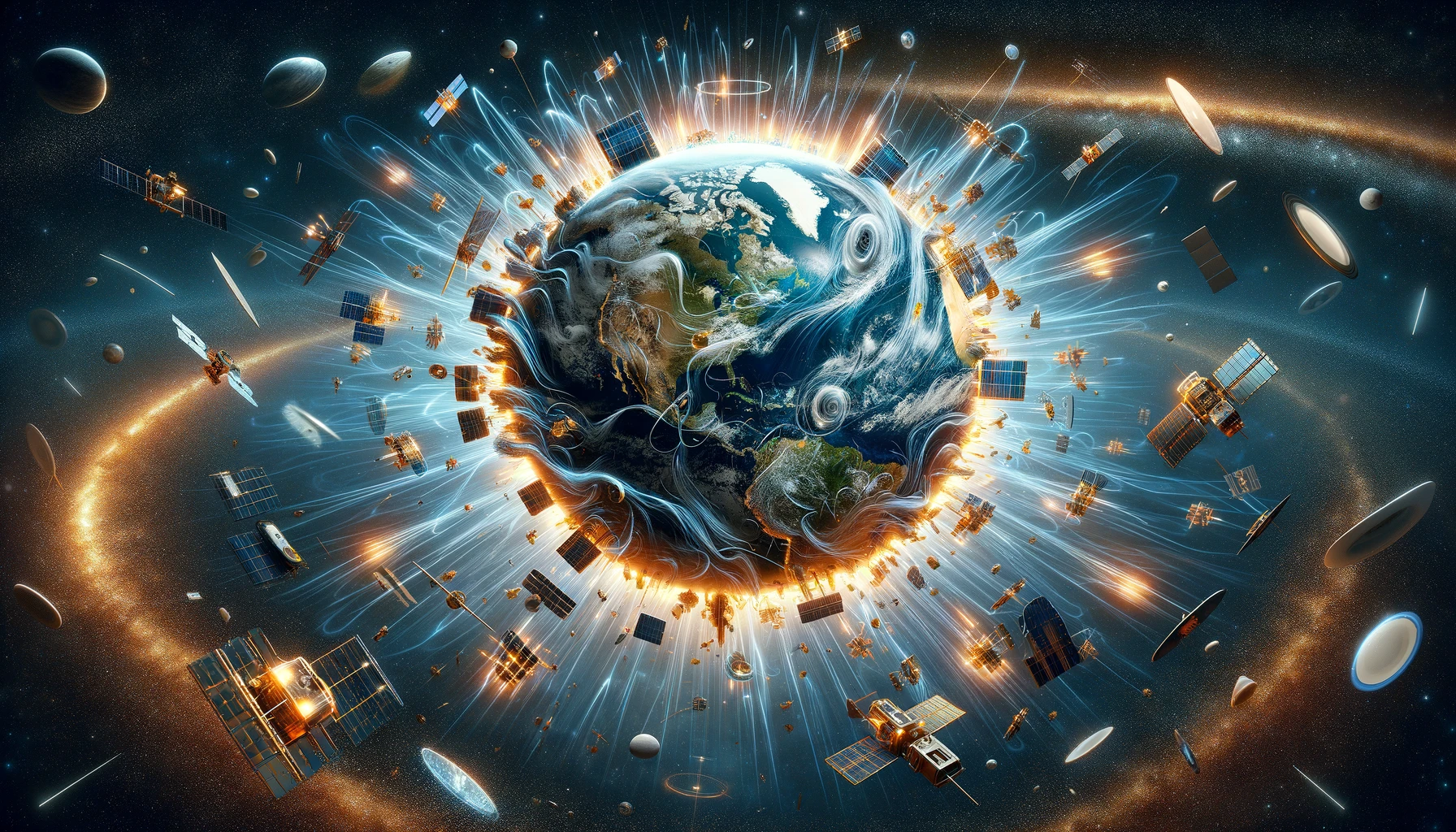Will Earth’s Protective Magnetosphere Be Affected By Megaconstellations?
The paper titled “Potential Perturbation of the Ionosphere by Megaconstellations and Corresponding Artificial Re-entry Plasma Dust” by Sierra Solter-Hunt, discusses the significant impact that the growing number of satellites and their subsequent re-entry into the Earth’s atmosphere could have on the planet’s ionosphere and magnetosphere. This work, while not yet peer-reviewed as of its publication date in December 2023, raises alarming concerns about the potential for human-made satellite debris to disrupt Earth’s magnetic field and atmospheric protection mechanisms. Here are some key points from the paper:
Key Findings
- Massive Increase in Conductive Particulate: The study estimates that 500,000 to 1 million satellites will be launched in the coming decades to support internet megaconstellations like SpaceX’s Starlink. The debris from these satellites, upon re-entry and demolition, is expected to significantly exceed the mass of the Van Allen Belts, creating a conductive layer of particulate around Earth that could disrupt the magnetosphere.
- Perturbation of the Magnetosphere: The conductive materials from satellite re-entry are feared to create a global band of plasma dust with a charge higher than the rest of the magnetosphere. This could weaken Earth’s protective shield against solar radiation, impacting not only satellite and spacecraft operations due to increased radiation and solar storms but potentially affecting the atmosphere’s integrity over centuries.
- Plasma Drag and Ionospheric Impact: The added density of conductive particulate is expected to lead to plasma drag within the meteor ablation zone, potentially overpowering other regions of the magnetosphere. This could have significant implications for Earth’s ability to protect itself from solar and cosmic radiation.
- Comparison to Mars and the Chicxulub Impact: The paper draws parallels between the potential loss of Earth’s magnetosphere and what is believed to have happened to Mars, as well as the Chicxulub asteroid impact’s role in the extinction of the dinosaurs. The author suggests that the satellite re-entry demolishment is introducing a similarly hazardous layer of conductive dust into Earth’s atmosphere.
Conclusions
Solter-Hunt’s analysis suggests that the proliferation of satellites and the resulting debris could have far-reaching consequences for Earth’s magnetic field and atmospheric protection. The study calls for immediate and intensive research into the impact of satellite megaconstellations and re-entry debris on the magnetosphere, as the rate of satellite launches and demolishments outpaces our ability to model and understand their potential effects comprehensively.
This paper underscores the urgent need for the space industry to consider the environmental impact of satellite megaconstellations, not just in terms of space debris and collision risks but also regarding the broader implications for Earth’s atmospheric and magnetic health. The findings suggest a critical need for multidisciplinary research and a reassessment of the strategies for deploying and managing satellite constellations in Earth’s orbit.








